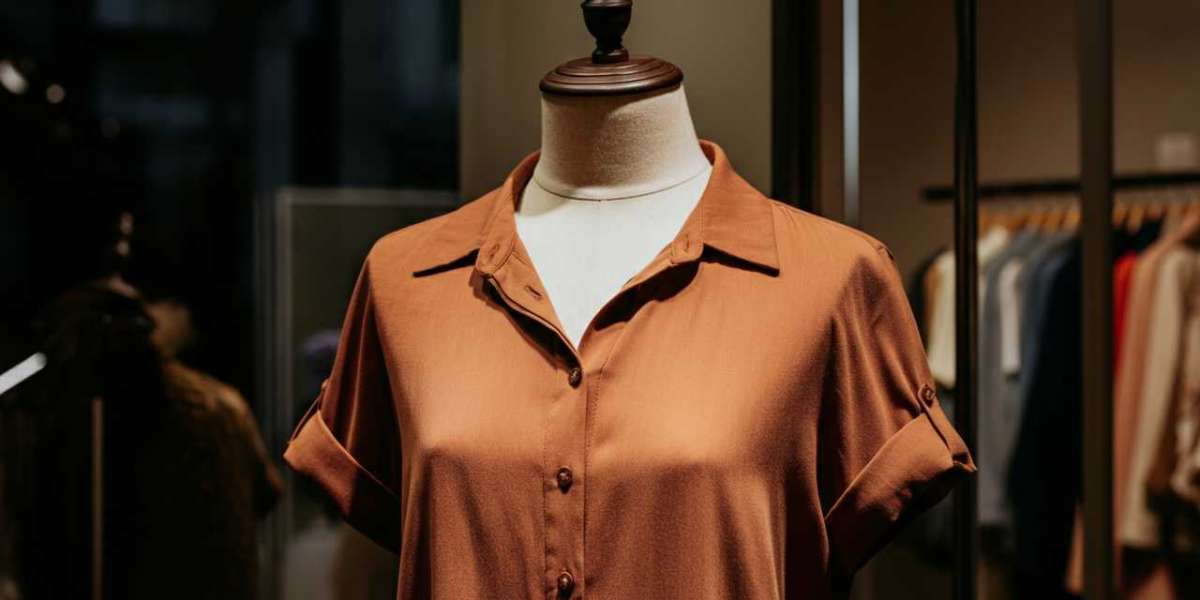The fashion industry has always been quick to adapt to new technologies, but virtual try on clothes is a leap that’s changing the entire shopping experience. Gone are the days when online shoppers had to guess how an outfit would look on them. Now, with AI-powered 3D clothing fitting and augmented reality (AR), customers can try on apparel virtually—anytime, anywhere—without stepping into a store.
This revolutionary technology is not just a fun gimmick; it’s a solution to long-standing problems in e-commerce, such as size uncertainty, product returns, and low buyer confidence.
The Rise of Virtual Try-On Technology in Fashion
In the early days of online shopping, product pages featured static images and vague size charts. Customers had to rely on their imagination and hope for the best. Unfortunately, that led to frustration and high return rates when clothes didn’t fit as expected.
With the introduction of virtual try on clothes, this guesswork is disappearing. Using your device’s camera and advanced AI body mapping, virtual try-on tools overlay 3D clothing models onto your body in real time.
Global fashion retailers, from fast fashion to luxury brands, are now integrating virtual fitting rooms into their websites and mobile apps to create a more interactive, personalized shopping journey.
How Virtual Try On Clothes Works – Behind the Scenes
While the end result looks simple—just you wearing a virtual dress or jacket—the technology behind it is highly sophisticated.
Body Mapping with AI – The system scans a customer’s body dimensions using their camera or uploaded photos.
3D Garment Rendering – Clothing pieces are digitized using 3D modeling so they can be displayed from every angle.
AR Overlay – Augmented reality technology projects the clothing onto the person in real time, adapting to body movements.
Fabric Simulation – Advanced rendering software mimics the way fabrics fold, stretch, and move.
This combination ensures that users see a realistic preview of how an item will look, improving purchase confidence.
Why Fashion Retailers Are Investing in Virtual Try-On
For retailers, virtual try on clothes is more than a tech trend—it’s a profit-driving tool.
Lower Return Rates – Customers who can visualize fit and style before buying are less likely to send items back.
Higher Conversion Rates – Interactive shopping experiences lead to increased engagement and more completed purchases.
Customer Retention – Offering innovative solutions sets a brand apart, keeping shoppers coming back.
In fact, some brands report return rate drops of up to 30% after implementing virtual try-on features.
Real-World Applications Across Fashion Categories
The beauty of virtual try-on is that it’s not limited to one style or market segment.
Everyday Wear – Casual tops, jeans, and dresses can be tried instantly for fit and style.
Formal and Bridal Wear – Brides can preview wedding gowns without multiple store visits.
Streetwear Luxury – High-fashion labels are offering AR previews for exclusive drops to increase hype.
This flexibility makes virtual try-on valuable across diverse customer bases.
Enhancing Customer Confidence with Virtual Try-Ons
One of the main reasons online shoppers hesitate to buy clothing is uncertainty—about size, style, or how a fabric might look in person.
Virtual try-on solves this psychological barrier by letting customers see themselves wearing the product in their own environment. This visual confirmation triggers confidence-driven purchases, a key factor in retail success.
From In-Store Mirrors to Online Platforms
Some brands are taking virtual try on clothes beyond online stores by installing AR-enabled smart mirrors in physical locations.
In-Store Experience – Customers can swap colors and styles instantly without changing clothes.
Online/Mobile Integration – Shoppers can try on items from home through apps or browser-based AR tools.
This hybrid approach blends the convenience of online shopping with the tactile experience of physical retail.
The Role of AI in Customizing the Shopping Experience
Artificial intelligence is the backbone of virtual try on clothes technology. Beyond just fitting visuals, AI enhances personalization:
Size Recommendations – AI compares body scans with brand-specific sizing data to suggest the best fit.
Style Matching – Algorithms recommend clothing items based on previous purchases or browsing history.
This combination of AR visualization and AI personalization creates a powerful, conversion-focused shopping experience.
Case Studies – Brands Leading the Way
Brand A – A global sportswear retailer introduced virtual try-on sneakers, resulting in a 22% increase in online sales within three months.
Brand B – A luxury fashion house integrated AR clothing fitting into their e-commerce app, seeing a 40% boost in app engagement.
These success stories prove that virtual try-on clothes is not just a niche trend but a mainstream retail advantage.
Challenges Limitations of Virtual Try-On Clothes
Like any technology, virtual try-on has its hurdles:
Device Compatibility – Some features require high-quality cameras and newer smartphones.
Fit Accuracy – While AR is impressive, perfect sizing simulation is still being refined.
Adoption Resistance – Smaller retailers may hesitate due to setup costs or tech learning curves.
The Future – What’s Next for Virtual Clothing Fitting?
The future of virtual try on clothes is even more immersive:
Metaverse Integration – Shoppers may soon try clothes in fully virtual stores within metaverse environments.
Social Media Shopping – Direct AR try-on via Instagram, TikTok, or Snapchat.
Haptic Feedback – Imagine feeling fabric textures through wearable devices during a virtual try-on.
Conclusion
Virtual try on clothes is reshaping the way we shop. By merging fashion with advanced technology, retailers can deliver a personalized, interactive, and confident buying experience. As AR, AI, and 3D rendering continue to improve, virtual try-on will become an essential feature for both e-commerce and physical retail.
Retailers who embrace this innovation early will not only reduce returns and boost sales but also secure a loyal customer base in an increasingly competitive fashion landscape.
FAQs About Virtual Try-On Clothes
1. What is virtual try on clothes?
It’s a technology that lets shoppers see how clothing would look on them using augmented reality and AI.
2. Do I need a special device for virtual try-on?
Most work on smartphones, tablets, or laptops with a camera.
3. Is virtual try-on accurate?
Fit accuracy is improving with AI, but exact sizing may still vary.
4. Can I use virtual try-on for accessories?
Yes, many platforms support shoes, hats, and even jewelry.
5. Does virtual try-on cost extra for customers?
Usually, it’s a free feature provided by the retailer.
6. Can virtual try-on work offline?
Most require an internet connection for real-time rendering.
7. Is my personal data safe when using virtual try-on?
Reputable retailers use secure data handling and do not store body scans without permission.
8. How does virtual try-on help reduce returns?
By allowing customers to see fit and style before purchase, it lowers dissatisfaction.
9. Are small fashion businesses able to use this technology?
Yes, affordable SaaS-based solutions are now available.
10. What’s next for virtual try-on clothes?
Integration with the metaverse, social media platforms, and even touch-based experiences.







